- News
- Reviews
- Bikes
- Accessories
- Accessories - misc
- Computer mounts
- Bags
- Bar ends
- Bike bags & cases
- Bottle cages
- Bottles
- Cameras
- Car racks
- Child seats
- Computers
- Glasses
- GPS units
- Helmets
- Lights - front
- Lights - rear
- Lights - sets
- Locks
- Mirrors
- Mudguards
- Racks
- Pumps & CO2 inflators
- Puncture kits
- Reflectives
- Smart watches
- Stands and racks
- Trailers
- Clothing
- Components
- Bar tape & grips
- Bottom brackets
- Brake & gear cables
- Brake & STI levers
- Brake pads & spares
- Brakes
- Cassettes & freewheels
- Chains
- Chainsets & chainrings
- Derailleurs - front
- Derailleurs - rear
- Forks
- Gear levers & shifters
- Groupsets
- Handlebars & extensions
- Headsets
- Hubs
- Inner tubes
- Pedals
- Quick releases & skewers
- Saddles
- Seatposts
- Stems
- Wheels
- Tyres
- Health, fitness and nutrition
- Tools and workshop
- Miscellaneous
- Cross country mountain bikes
- Tubeless valves
- Buyers Guides
- Features
- Forum
- Recommends
- Podcast
£3,200.00
VERDICT:
Light, stiff and comfortable, the new Roubaix with its FutureShock delivers an impressive ride
Weight:
8,350g
Contact:
At road.cc every product is thoroughly tested for as long as it takes to get a proper insight into how well it works. Our reviewers are experienced cyclists that we trust to be objective. While we strive to ensure that opinions expressed are backed up by facts, reviews are by their nature an informed opinion, not a definitive verdict. We don't intentionally try to break anything (except locks) but we do try to look for weak points in any design. The overall score is not just an average of the other scores: it reflects both a product's function and value – with value determined by how a product compares with items of similar spec, quality, and price.
What the road.cc scores meanGood scores are more common than bad, because fortunately good products are more common than bad.
- Exceptional
- Excellent
- Very Good
- Good
- Quite good
- Average
- Not so good
- Poor
- Bad
- Appalling
The brand new 2017 Specialized Roubaix is arguably one of the biggest bike launches of the year, not because the US company is one of the big players in the market, but because of the Roubaix's history and legacy in helping to popularise the whole sportive and endurance bike category, undoubtedly the favourite with today's comfort-craving cyclist.
Launched a few years after the turn of the century, the first Roubaix was something of a mould-breaking bike. It combined the carbon fibre frame and DNA of a performance race bike but wrapped it all up with the sort of geometry and comfort-boosting features that wouldn't put your back out of joint if you're not a skinny race whippet logging 30-hours a week in the saddle.
> Find your nearest dealer here
Frame details
Developments in the endurance bike category have moved apace and the competition is fierce, with lots of different approaches used in trying to achieve the same goal of providing a smoother ride. Bianchi has its CounterVail, Pinarello a rear damper on the K8-S, Trek its front and rear IsoSpeed decouplers, and many other manufacturers use a combination of clever carbon layup and tube profiles to deliver a smoother ride.
For most of the Roubaix's existence Specialized has employed small elastomer inserts called Zertz, placed in the fork blades and seatstays. With this brand new 2017 bike, the Zertz have been binned and replaced in the front by the Future Shock, a small spring housed inside the head tube providing 20mm of movement, and Specialized's existing CG-R 27.2mm seatpost contained inside a wide diameter seatpost and a dropped seatclamp, to allow more deflection.
You can read all the techy details about how Specialized worked with McLaren Applied Technologies to develop the new bike using a rolling efficiency simulator to help the company better understand what 'smooth' actually means in this first look article, but this review will concentrate on the actual real-world performance of the bike. And answering the important question: is Future Shock a gimmick or a game-changing innovation? Expectations are high...
The bike on review is the mid-range model in a five-bike range, with a full Shimano Ultegra mechanical groupset and hydraulic disc brakes, DT R470 wheels with 26mm Specialized Turbo Pro tyres and an all-up weight of 8.35kg (18.4lb).
Smooth as butter
The big talking point with the new Roubaix is the Future Shock, so... let's talk about that first.
There's no doubt about it, the Future Shock works. It delivers a smoother ride than the old Roubaix SL4 and feels smoother than other endurance bikes such as the Trek Domane SLR and Canyon Endurace CF SLX. It's really good at reducing the high-frequency vibrations normally felt through the handlebar.
It might feel soft on the shop floor – I can easily bottom it out if I lean heavily on it – but out on the road it's a different matter. Because the Future Shock is positioned between the stem and frame, it's only supporting your upper body weight. That means it's not soft and bouncy – it's definitely no pogo stick – but is instead quite firm, yet soft enough to react to the smallest road buzz very well.
Critically, the Future Shock isn't soggy or saggy when riding. There's no sense that the handlebar isn't anything but securely connected to the frame. You don't really notice the Future Shock's 20mm of travel when you are riding along: it's not like you feel the handlebar moving up and down or anything.
You certainly notice the smoothness it provides, and if you concentrate and watch the Future Shock (making sure you're on a quiet traffic-free road to do this!) you can see the protective rubber boot gently compressing and extending. But ignore it and focus on pedalling and enjoying the ride, and you forget it's even there, and just enjoy the smoothness it provides.
There's also no strangeness when sprinting or climbing out of the saddle, movements that put more weight into the handlebar. When you're leaning heavily on the bar during a steep climb there is a bit more movement compared with seated pedalling, but get out of the saddle and give it the beans in a full powered sprint and there's no feeling you're losing any precious speed.
What I'm saying is it doesn't bounce like Tigger on a pogo stick when you're getting really feisty with the handlebar – the Future Shock is controlled and well behaved, impressive considering there's no damping.
Because the Future Shock is positioned between the stem and head tube, it has no negative effect on the handling of the bike. It doesn't massively affect the geometry of the Roubaix, and the result is that the handling – which is excellent – remains predictable in all situations. I found no issue with diving under heavy braking or steep descents to speak of.
What I didn't have the chance to do is test the bike over the cobbled roads it was designed for, the Arenberg or Carrefour, but it's certainly something I hope to be able to do on a longer term test of the Roubaix. While it's designed for the particular demands of that race, it's how the Roubaix copes with the regular sorts of roads regular cyclists have to deal with that really matters when judging the new bike. Based on my time testing it, it's really very good at ironing out imperfections and reducing jolts caused by damaged roads. It's not just on really rough roads full of holes and bumps that the Future Shock excels, though, over roads that you might consider smooth – like surface dressed lanes to pick one example – it's exceptionally good.
There are a few niggles. While it damps vibrations from most of the roughest roads I could find to test the Roubaix on, and deals with smaller bumps and rounded impacts very well, it's not so successful with square edge impacts like exposed manhole covers, but the feedback through the handlebar is certainly softer than any other bike I've ridden. It can also be noisy at times, more noticeable at lower speeds on certain road surfaces, which, while not annoying, does detract from the experience somewhat.
I've not really had the bike long enough to fully test the durability, but I've pointed a hosepipe at the Future Shock a few times and ridden in plenty of mud and rain, and it's held up fine. I'll try to hold onto this bike for a few months to really test it for longer.
Why has Specialized used a spring and not an air shock, which would be lighter and more easily tuneable? My guess is it's because the spring is very active and responds almost immediately to even the smallest bumps, there's none of the stiction you can get with an air shock on lower energy impacts. It really doesn't require much force to get the Future Shock moving and it's very sensitive. As I said, even on roads that might appear smooth to the eye, the spring is still busy working away.
The Roubaix isn't just about the Future Shock. To combat rear-end impacts, Specialized has used its existing CG-R seatpost, a 27.2mm diameter carbon fibre post topped with a Zertz head. I've ridden this seatpost previously and been impressed with it, but on the Roubaix the company has increased the diameter of the seat tube and dropped the seat clamp well below its usual position. These two measures increase the available deflection for the post, and it works: seated comfort is fantastic with no small or big impacts finding their way through to your butt. It's as smooth as the Trek Domane SLR in its softest setting, and comparable to the Canyon Endurace CF SLX with its split carbon seatpost.
Redesigned frame
So, that's a lot of words just on the Future Shock... Time to take a look at the rest of the new Roubaix. And there is a lot to talk about: Specialized has majorly overhauled the complete frame and fork in every single department.
A big change is that it's only available with disc brakes, there is no rim brake variant. Aside from the benefits provided by hydraulic disc brakes in all weathers, there's drastically improved tyre clearance – it'll take up to 32mm tyres, up from 28mm on the old bike, with 26mm tyres fitted as standard.
Specialized's previous disc-equipped road bikes have used quick releases but the new Roubaix uses 12mm thru-axles front and rear. The 12mm thru-axle has rapidly become the standard on the latest disc brake-equipped road bikes, as have flat mount disc callipers. There's also fully internal gear cable and brake hose routing, and it's neatly done.
One detail many people will get on board with is the externally threaded bottom bracket. Press-fit bottom brackets have lost a lot of fans over the years, and Specialized must be applauded for listening to its customers and acting on this feedback.
The one big glaring omission on the new frame is the lack of mudguard eyelets. I'm not really sure what Specialized is playing at in not including them, it's not like there isn't space for mudguards. Yes, it's a bike designed for racing, but many people (based in the UK at least) looking to buy an endurance bike will want the option to fit mudguards for winter cycling.
The other significant change is the revised geometry. The old Roubaix had a reputation for having a very tall head tube, but on this new bike, its height has been slashed. Specialized has taken inspiration from its Tarmac race bike and provided a more aggressive and racy geometry in the new Roubaix.
The head angle is steeper, the bottom bracket lower, the wheelbase shorter, the stack is 30mm lower and the reach is 10mm longer. Specialized offers a wide range of fit adjustments, through a choice of headset top caps and its novel Hover riser handlebar, so you can replicate your position on the old Roubaix, or get a much racier setup. I found it a much better fit than the old bike, and the wider range of positions will satisfy a broader audience.
The new Roubaix is also lighter than the old model. The frame weighs a claimed 700g with the Future Shock adding 200g, so the frame weight is well under a kilogram and compares well with other endurance bikes. The fork adds 300g.
This Ultegra-equipped bike in a size 56cm hit the scales at 8.35kg – a bit lighter than most other similarly equipped disc bikes, which usually come in at about 8.8kg or thereabouts. With some high-end parts, it would definitely be possible to get down to the UCI weight limit if that sort of thing interests you.
Specialized has also added SWAT (storage, water, air, tools) to the bike, a completely optional compartment that sits at the bottom of the down tube and is a smart alternative to a saddle bag or stuffed jersey pockets. There's a third bolt below the bottle cage mounts on the down tube and seat tube to which the compartment is fixed.
Build and equipment
There are six Roubaix models in the range, all using essentially the same carbon fibre frame, save for a bit of posher carbon on the top models. The Roubaix Expert here sits bang in the middle of the lineup, and for your £3,200 you get a full Shimano Ultegra groupset, with mechanical gears and hydraulic disc brakes.
The long cage rear mech accommodates an 11-32t cassette which along with the compact 50/34 chainset provides a wide range of gears, and steep climbs are easily conquered. The hydraulic disc brakes are as good as we've come to expect from Shimano, with a lovely lever feel with just the right amount of lever travel and modulation to tackle the trickiest road conditions.
Specialized's own 26mm Turbo Pro wide tyres have proved to be fast rolling and very supple on rough roads, with good confidence inspiring traction on wet and muddy roads. A BlackBelt puncture protection has ably dealt with winter roads covered with potential tyre flattening obstacles.
The tyres are mounted to DT R470 Disc Pro wheels with a wide profile and tubeless-ready design. They are reliable and tough and have easily handled a few pothole impacts without going out of true. It's just a shame the tyres aren't tubeless-ready, but at least the rims are ready for a future tubeless upgrade.
Specialized reaches into its own parts bin for the finishing kit, and it's all good quality kit that raised no concerns. The Phenom Expert GT saddle is exceptionally comfort, wide and supportive. The Hover Expert aluminium handlebar, with its 15mm rise, sure looks odd but it's comfortable, with short reach drops. The raised centre section limits space for mounting lights, but I had no problem fixing a pair of lights either side of the stem with space for my computer on the stem.
Ride and handling
With the revised geometry and improved vibration damping qualities, the performance and handling of the Roubaix are highly impressive. The vibration damping qualities haven't dampened the ride: it's agile, sprightly and alert to even the smallest inputs, whether through the handlebar or pedals.
The handling is a delight. The changes have brought it closer to the Tarmac, while retaining a more relaxed and comfortable fit. Rest assured, there's no negative impact on the handling from the Future Shock, it doesn't adversely impact the handling at all. It's a nimble feeling bike whether cruising along rolling country lanes or hurtling down favourite descents.
I've been riding this bike constantly for the past few weeks and I have got used to it very quickly. In fact, from the first ride I felt right at home on it, there was no period of familiarisation required. That's how well it works. You can change the spring weight to alter the performance and that's something I will do during a longer test period.
I've slung the bike up and down some of my most challenging climbs and descents, my most fun roads, and nowhere has it given me cause for concern. It does make some rough descents a smoother affair but, unlike a suspension fork, it doesn't really contribute to improved handling because it's not isolating the front wheel from the frame. It does make some fast descents with a jittery road surface a bit less skittish, though.
It's a very compliant ride, that much is clear, but it's also a very responsive bike. It feels much more like a race bike than the previous Roubaix and, as I've said, compares well to other more modern endurance models like the Canyon Endurace CF SLX or Trek Domane SLR. There's no undesired bob from the Future Shock, it's composed and balanced.
> Read our guide to the best sportive and endurance road bikes
This build might not be the lightest in the Roubaix range, but it certainly didn't feel heavy on the road. It's a fast and lively bike and tackles climbs very impressively, holds good speed on flat and undulating roads – helped by being able to adopt quite an aggressive position once I had changed the stem – and, of course, the compliant ride smooths out the speed-robbing bumps.
Smooth is faster, is Specialized's mantra, and that appears to be the case. We well know how good wider tyres are and have been impressed by other endurance bikes when it comes to keeping pace on rough roads. Riding my regular test loops on roads that I know very well, the new Roubaix gives nothing away to other endurance bikes I've tested, and bests them all on the roughest roads. It really does offer a supremely smooth ride. It also leaves you feeling fresher at the end of a ride, so well isolated from the worst bumps and vibrations.
For all its critics and cynics – and there have been a few since the Roubaix first broke cover – the Future Shock does really work. The engineering and packaging are impressive, and far from recycling old technology from the history books, Specialized has taken a quite ingenious approach to providing more front-end smoothness than is possible from just clever manipulation of carbon fibre layup and tube profiles, without adding too much complexity or weight.
You might be thinking you don't need this level of comfort. But here's the thing I found while testing the Roubaix: even on roads I'd normally consider pretty smooth, the Future Shock made them smoother. It's working all the time and combines brilliantly with the deflecting seatpost to provide a very compliant and comfortable ride. And there's no weight penalty for the Future Shock, so you're not paying the price when it's only working minimally, but it's there when you do encounter a rough road.
Conclusion
Turns out the Future Shock in the new Roubaix isn't a gimmick, and in fact offers a very smooth ride. But it's not all about the Future Shock, as it's packaged in a redesigned frame that offers a high level of performance with great handling, disc brakes and space for wider tyres. Only the lack of mudguard mounts and occasional noise from the Future Shock blemish what is otherwise a cracking bike.
Verdict
Light, stiff and comfortable, the new Roubaix with its Future Shock delivers an impressive ride
road.cc test report
Make and model: Specialized Roubaix Expert (2017)
Size tested: 56cm
About the bike
State the frame and fork material and method of construction. List the components used to build up the bike.
Frame - FACT 10r Carbon, Endurance Geometry, Rider-First Engineered, 12x142mm Thru-Axle, Future Shock Suspension, 20mm Travel
Fork - Roubaix Disc, FACT 11r Carbon, 12x100mm Thru-Axle
Shock - n/a
Number of Gears - 22
Shifters - Shimano ST-RS685, 11 Speed
Chainset - Shimano Ultegra Compact, 50/34T
Chainrings - 50/34T
Cassette - Shimano Ultegra, 11 Speed, 11-32T
Chain - Shimano Ultegra, 11 Speed
Front Derailleur - Shimano Ultegra, Braze-On
Rear Derailleur - Shimano Ultegra, Long Cage, 11 Speed
Bottom Bracket - Included
Pedals - Not Included
Rims - DT R470 Disc Pro, Tubeless Compatible
Front Hub - DT R470 Disc Pro, 12x100mm Thru-Axle
Rear Hub - DT R470 Disc Pro, 12x142mm Thru-Axle
Front Tyre - Specialized Turbo Pro, 60TPI, Folding Bead, Black Belt Protection, 700x26c
Rear Tyre - Specialized Turbo Pro, 60TPI, Folding Bead, Black Belt Protection, 700x26c
Front Brake - Shimano Ultegra Hydraulic Disc, Ice-Tech Resin Pads With Fins
Rear Brake - Shimano Ultegra Hydraulic Disc, Ice-Tech Resin Pads With Fins
Brake Levers - Shimano ST-RS685, 11 Speed
Handlebars - Specialized Hover Expert Alloy, 15mm Rise, 125mm Drop, 75mm Reach
Grips - Specialized S-Wrap Roubaix With Sticky Gel
Headset - Included
Stem - Specialized Pro SL, Alloy, 4-Bolt
Saddle - Specialized Phenom Expert GT, Adaptive Edge Design, Hollow Titanium Rails, 143mm
Seatpost - Specialized CG-R FACT Carbon, Single Bolt, 27.2mm
Tell us what the bike is for, and who it's aimed at. What do the manufacturers say about it? How does that compare to your own feelings about the bike?
Specialized says: "We always knew that smoother was faster, but before the all-new Roubaix Expert, we couldn't have imagined just how much faster it actually is. The frame is the lightest that we've ever made, and it's been constructed from our FACT 10r carbon fiber. Its stiffness levels are also off the charts, and compared to the SL4 iteration of yesteryear, you'll experience a whole new, faster, and more efficient geometry. Through some engineering sorcery, however, we've managed to keep the same fit, feel, and position that we've all come to love from the SL4. Of course, you're probably thinking, "get on to the suspension thing up front." We call it Future Shock, and essentially, it's a piston in the head tube with 20mm of travel. We developed this technology in partnership with McLaren Applied Technologies, and the result of this are a host of drastic performance improvements, namely in the vertical compliance department. Without giving a physics lecture, we found that focusing on vertical compliance, instead of fork splay, meant that we could improve smoothness, speed, and comfort in one fell swoop. And of all the bikes that we've tested with our Rolling Efficiency Model, the new Roubaix outperforms anything on the market. Lastly, we spec'd it with awesome components, like Ultegra 6800 11-speed shifting, hydraulic disc brakes, and ultra-tough DT R460 Disc Pro wheels."
Frame and fork
Overall rating for frame and fork
9/10
Tell us about the build quality and finish of the frame and fork?
Excellent build quality and really high-quality finish and a durable paint job.
Tell us about the materials used in the frame and fork?
Specialized says: "It has been constructed from our FACT 10r carbon fiber, which is only slightly heavier than the posher grade of carbon used in the top-end Roubaix frame."
Tell us about the geometry of the frame and fork?
The changes – shorter stack and longer reach – place the new Roubaix closer to the current benchmark bikes in the endurance category.
How was the bike in terms of height and reach? How did it compare to other bikes of the same stated size?
I found the teach and stack spot on – I changed the stock 100mm stem to a 120mm stem and found the fit perfect, comfortable for long rides but reasonably low enough at the front for faster paced riding.
Riding the bike
Was the bike comfortable to ride? Tell us how you felt about the ride quality.
Extremely comfortable, this is where the new Roubaix performs brilliantly.
Did the bike feel stiff in the right places? Did any part of the bike feel too stiff or too flexible?
As well as offering fantastic comfort, it's also a very stiff frame and highly responsive to aggressive and demanding riding.
How did the bike transfer power? Did it feel efficient?
Very well indeed, no feeling that any power is being lost anywhere in the frameset.
Was there any toe-clip overlap with the front wheel? If so, was it a problem?
None.
How would you describe the steering? Was it lively, neutral or unresponsive? Eagerly responsive to steering inputs.
Tell us some more about the handling. How did the bike feel overall? Did it do particular things well or badly?
The handling was a highlight of the new Roubaix, a very nice bike to ride fast or slow.
Which components had the most effect (good or bad) on the bike's comfort? would you recommend any changes?
The Specialized finishing kit, even the funny Hover handlebar, was a delight to use. Impressed with the Turbo Pro tyres as well.
Which components had the most effect (good or bad) on the bike's stiffness? would you recommend any changes?
It's a shame the tyres aren't tubeless, that would be a definite upgrade if I bought the bike.
Which components had the most effect (good or bad) on the bike's efficiency? would you recommend any changes?
Unless you wanted to put the bike on a diet, there's nothing that needs changing to get the best out of the Roubaix.
Rate the bike for efficiency of power transfer:
8/10
Rate the bike for acceleration:
7/10
Rate the bike for sprinting:
7/10
Rate the bike for high speed stability:
9/10
Rate the bike for cruising speed stability:
9/10
Rate the bike for low speed stability:
8/10
Rate the bike for flat cornering:
8/10
Rate the bike for cornering on descents:
9/10
Rate the bike for climbing:
7/10
The drivetrain
Rate the drivetrain for performance:
9/10
Rate the drivetrain for durability:
8/10
Rate the drivetrain for weight:
7/10
Rate the drivetrain for value:
8/10
Wheels and tyres
Rate the wheels for performance:
8/10
Rate the wheels for durability:
8/10
Rate the wheels for weight:
7/10
Rate the wheels for comfort:
8/10
Rate the wheels for value:
8/10
Rate the tyres for performance:
9/10
Rate the tyres for durability:
8/10
Rate the tyres for weight:
8/10
Rate the tyres for comfort:
8/10
Rate the tyres for value:
8/10
Controls
Rate the controls for performance:
8/10
Rate the controls for durability:
8/10
Rate the controls for weight:
8/10
Rate the controls for comfort:
9/10
Rate the controls for value:
8/10
Your summary
Did you enjoy riding the bike? Yes
Would you consider buying the bike? Yes
Would you recommend the bike to a friend? Yes
Rate the bike overall for performance:
9/10
Rate the bike overall for value:
8/10
Use this box to explain your score
There's a lot of tech packed into the new Roubaix but the best thing is how all the changes mesh together to create a thoroughly enjoyable endurance bike that definitely needs to be on your shortlist.
About the tester
Age: 31
I usually ride: My best bike is:
I've been riding for: 10-20 years I ride: Every day I would class myself as: Expert
I regularly do the following types of riding: road racing, time trialling, cyclo-cross, commuting, touring, mountain biking
David worked on the road.cc tech team from 2012-2020. Previously he was editor of Bikemagic.com and before that staff writer at RCUK. He's a seasoned cyclist of all disciplines, from road to mountain biking, touring to cyclo-cross, he only wishes he had time to ride them all. He's mildly competitive, though he'll never admit it, and is a frequent road racer but is too lazy to do really well. He currently resides in the Cotswolds, and you can now find him over on his own YouTube channel David Arthur - Just Ride Bikes.
Latest Comments
- Rendel Harris 39 min 29 sec ago
Don't be daft sir, it's not the twelfth of never yet!
- Rendel Harris 40 min 15 sec ago
Yes, I felt it lived down to the expectations the description had provided.
- momove 1 hour 28 min ago
To be fair, if I had that photo I'd be posting it everywhere too.
- Steve K 1 hour 45 min ago
A friend of mine had several high end bikes nicked from his garage. The thieves thought they had removed the airtags but missed one. As a result...
- Rendel Harris 1 hour 51 min ago
People aren't talking about whether they could make hundreds of thousands of profit (which it has yet to be seen whether this does) but, quite...
- David9694 2 hours 46 min ago
"A person was taken to hospital after a car crashed into a wall in the early hours..."
- David9694 4 hours 14 min ago
"Ah well, it was just an accident" seems to have become one of the most important ideas in the active travel campaigner's world. I guess the ...
- whosatthewheel 6 hours 7 min ago
He won't be "jailed" for life as it will not be a "whole life" sentence. He's 22 now, so may be out as early as when he is 37 as the minimum "jail"...
- BigSigh 15 hours 25 min ago
I am absolutely certain that it's not fair for trans-identifying males who went through male puberty to compete in female sports... and that should...











































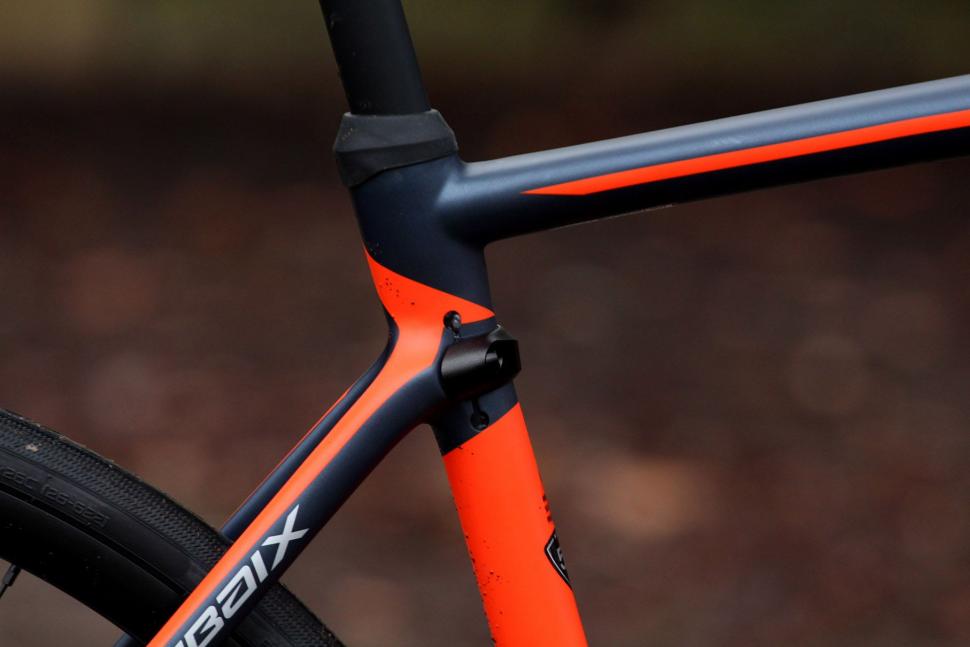

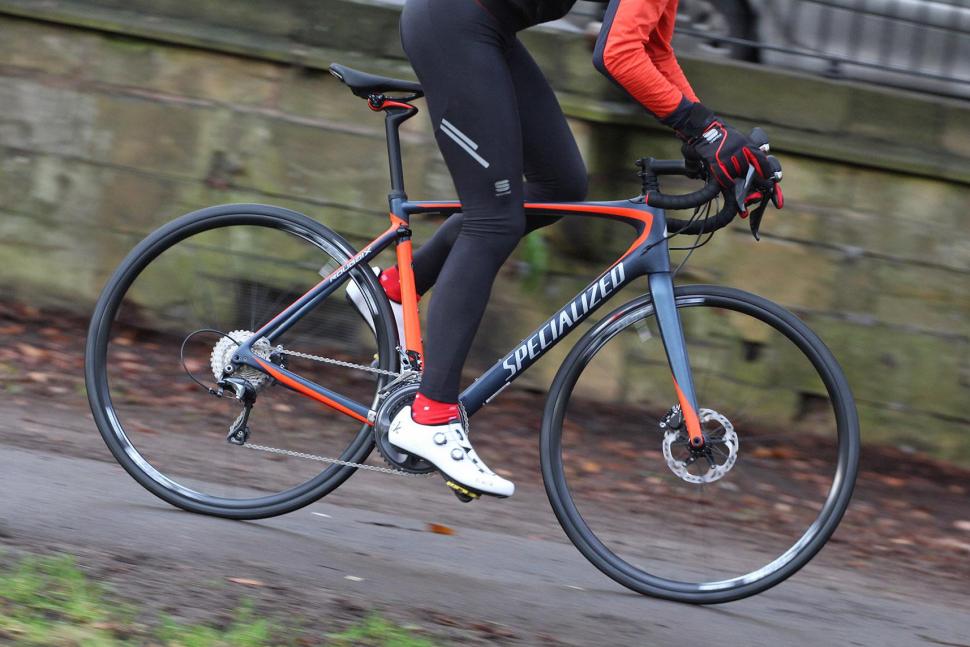
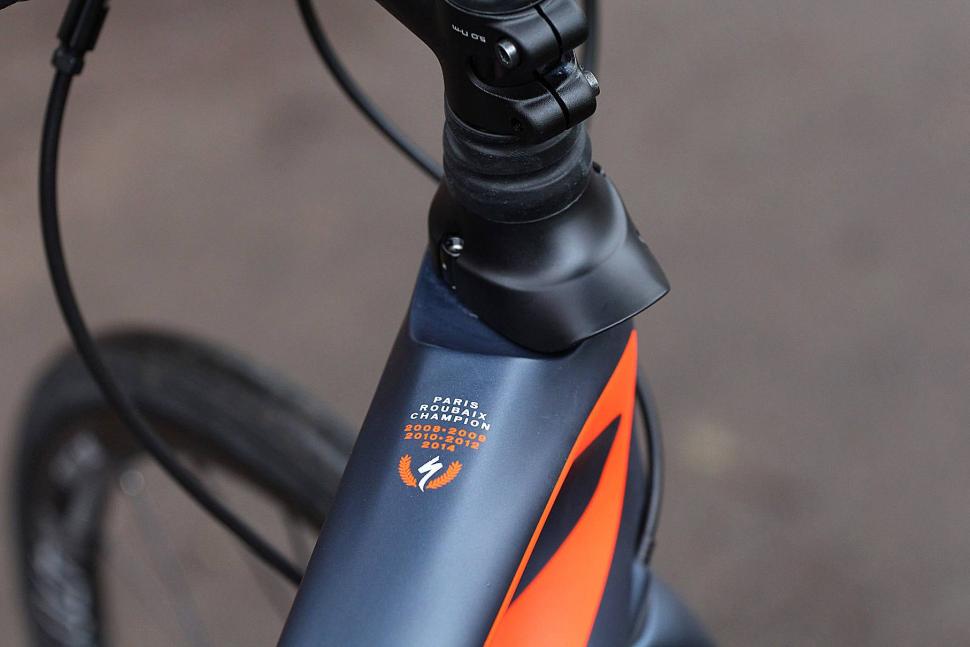


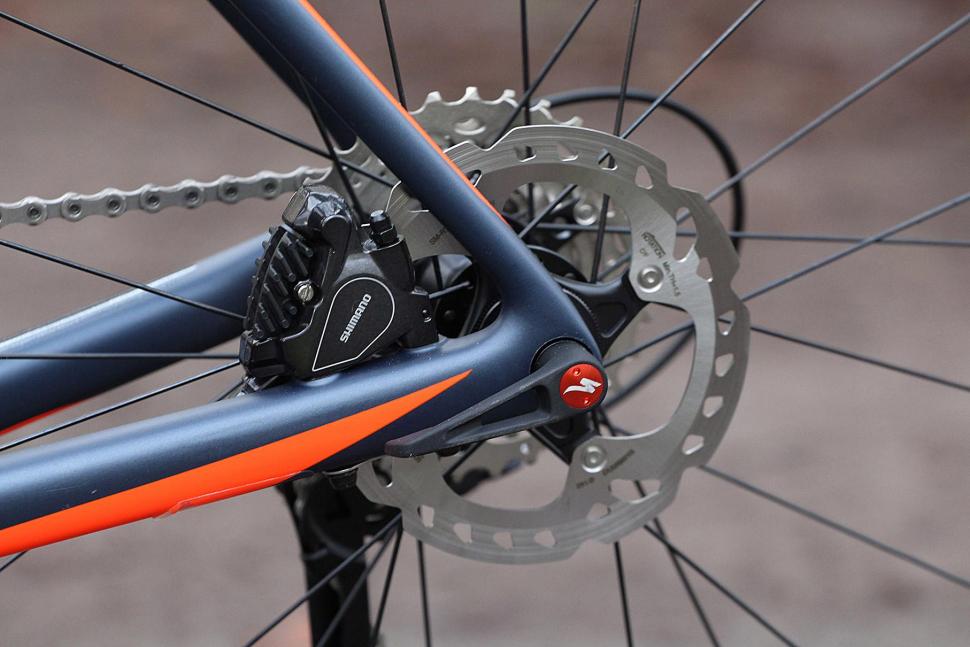

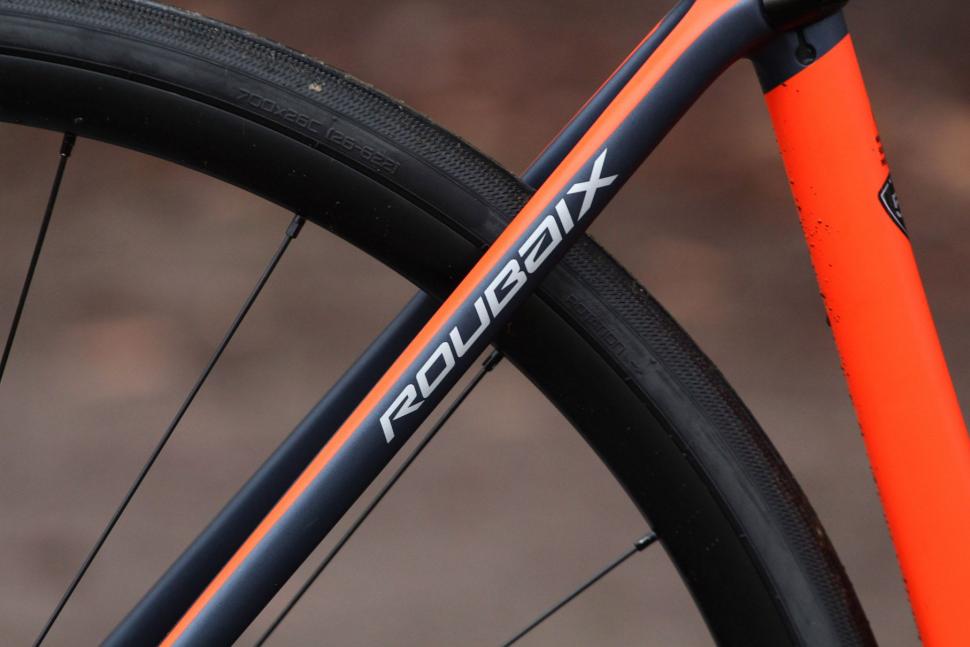




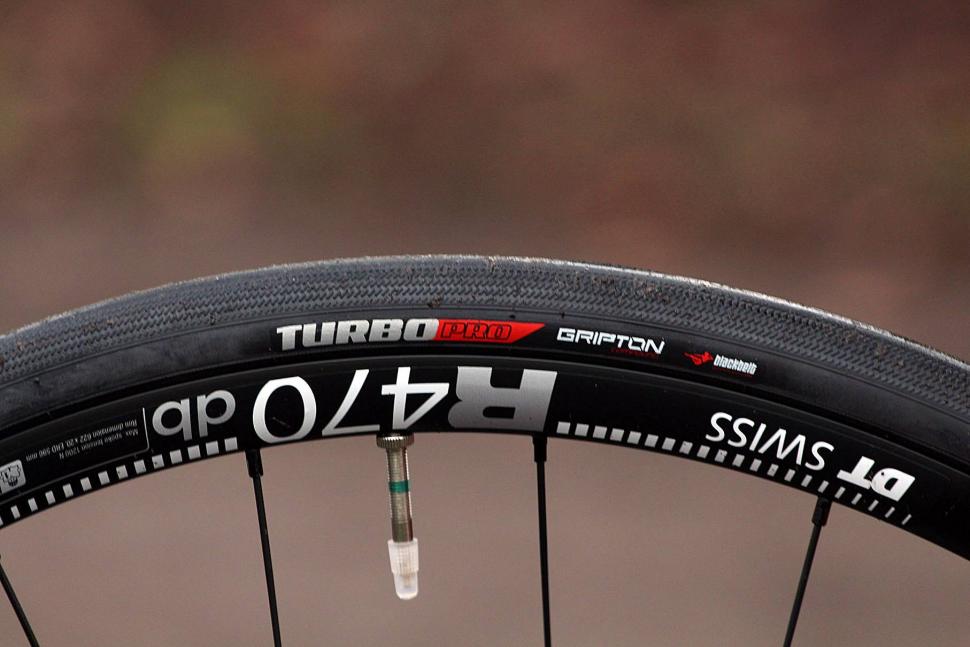

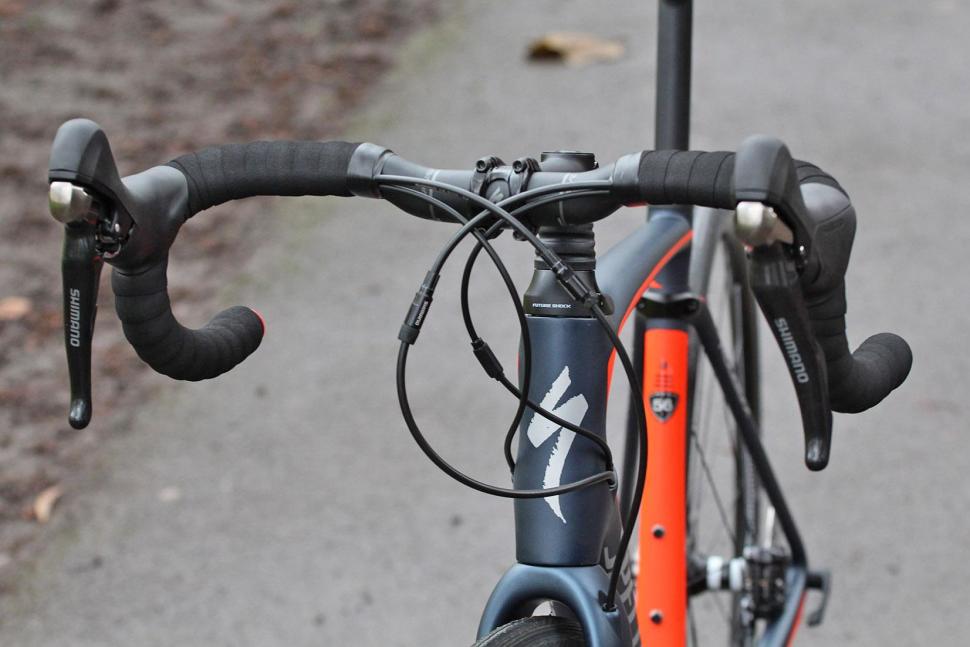

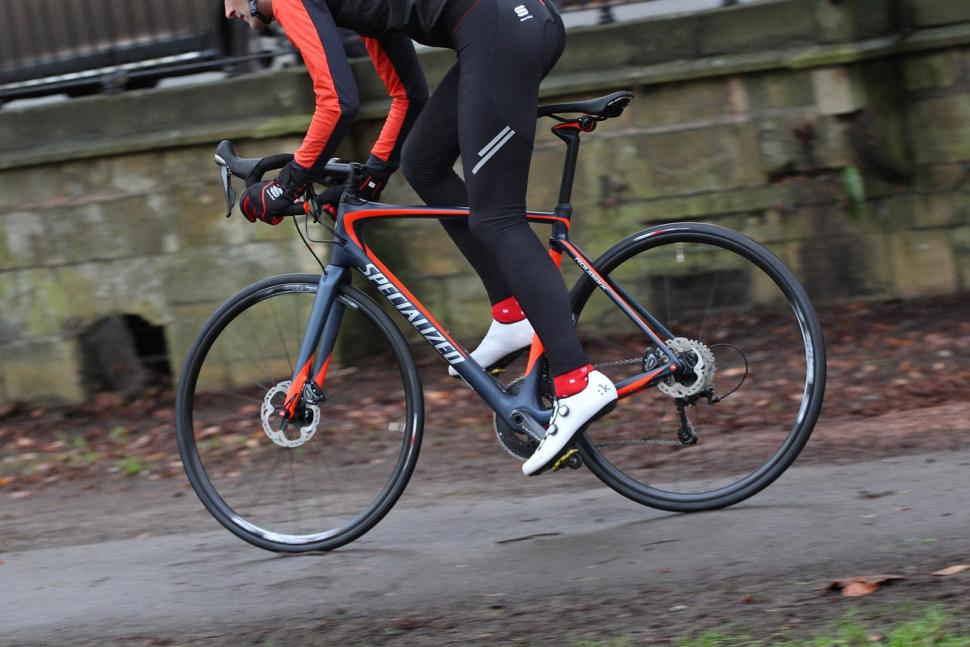
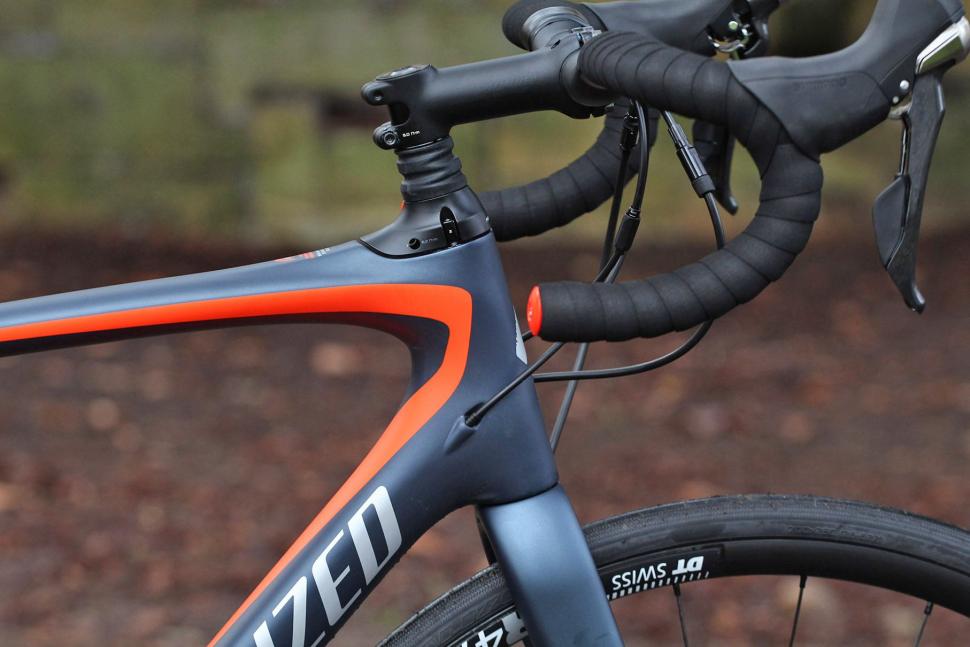



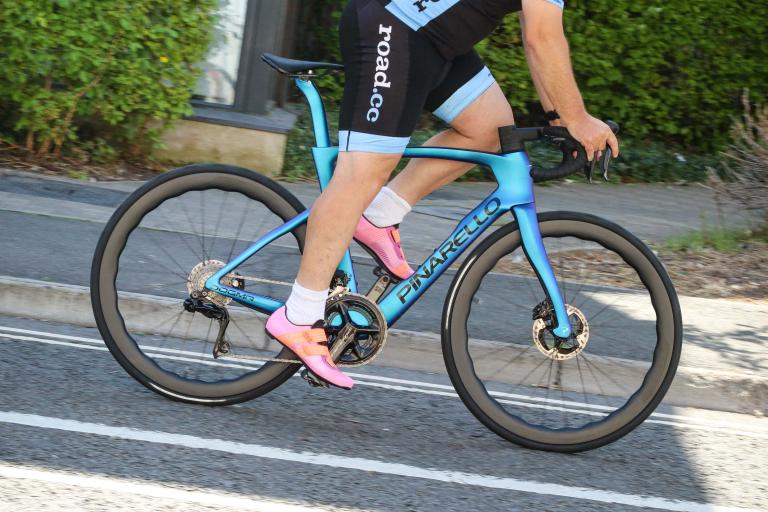
Add new comment
14 comments
I was the winning bidder on this bike off eBay. I should get it tomorrow! Can't wait! I test rode one a few weeks ago and all I can say is it was an incredibly smooth ride.
IMG_0273.JPG
The stack height is actually about 5mm higher than the old version. The head tube is 30mm shorter, but the futureshock and top cap add back all of that and a bit more. Apparently you can get a shorter top cap to chop off 10mm or so. But, you are not going to get the front end of a Tarmac, though the overall geometry is much closer to the Tarmac. Spesh says the futureshock means you can be comfy on a racy geometry, so they tightened it up considerably.
We are all aware that a bike doesn't need mounts to fit mudguards, right? Are we all aware that it's almost 2017 and things have come a long way in this respect?
Hell, I ride an Allez e5 SL as my winter bike with full mudguards and not a mount in sight!
How would it work if you need to run a lower stem as it looks like it's not as easy as removing a spacer or 2?
The handlebars with rise are awful to look at. They could just use classic handlebars with a flipped stem. If that is not enough why on earth did they reduce headtube length and they didn't add a couple of inches uncut tube? Simple solutions!
But otherwise the Roubaix is one of the first road bikes that admitted that we are not all pros, and for that we love it.
@bigblue - yes, some mudguards do mount on forks or seatposts, but for many the trick was to use the caliper brake assembly to attach to (e.g. SKS Raceblade Long). As there's no longer a brake bridge or mounting hole there, that option's gone on many modern disc brake frames. So your approach may still work with certain mudguards.
Upshot is that my money will be going elsewhere when I'm looking to move on from my aluminium Specialized Secteur (which also lacks mudguard mounts but at least has brake calipers for the aforementioned bodge).
There are various ways to add mudguards to fixing-less bikes aren't there ? The Crud ones, or some SKS ones (I think). This bike will have lots of clearance, which is the main problem to overcome on some frames.
The difference between cruds/sks raceblade clip on mudguards and proper fixed mudguards is night and day.
The clip ons (in my experience, I've had both types)
1. Give less coverage - especially at the front where your knee down (plus your drivetrain) can get covered in crap still. At the back they wobble about (especially the cruds) so anyone behind still gets it.
2. Mark the paintwork. I doubled up on helicopter tape to prevent this but they still wore through to the paint (if you check regularly then this wont be as much of a problem)
3. They move about and rub on the tyre, especially on the front. The most often happens in the rain...when you least want to stop and faff around fixing it.
It may depend on the bike. My experiences were with a typical road bike with less clearance...but regardless, the coverage issue is a biggie.
How can a company designing an "endurance" bike not understand that riders doing any sort of real endurance riding are often going to want mudguards? Shame.
Was genuinely interested in this bike as, like StoopidUserName, I thought it had retained the previous model's hidden mudguard mounts. As I live in a particularly wet part of this wet country, then no mudguard mounts means no sale for me. Shame.
How would one bunny hop with it?
Sorry but that weight is for the S-Works model, after a quick bit of searching I found.
I love the idea of the Future Shock but before spending the money I think I'll wait to see how it fares longer term. I'm half waiting for a raft of broken springs. If that doesn't happen this bike might well become my summer mile muncher. In winter it's often shorter rides I'm doing so my mudguard equipped, and old faithful, Synapse will do the trick there.
Hopefully the bike will get kept for a long term review. I'll be here to read it.
I'm sure I read this had hidden mudguard mounts like the BMC Roadmachine etc.
If not then I wont even consider this. Shame.
I'm sorely tempted by the Roubaix but would love to see a review of the Comp, which to me looks like a price more in reach of us mere mortals. Any comments from road.cc as to what is gained and lost between the models? Thanks.